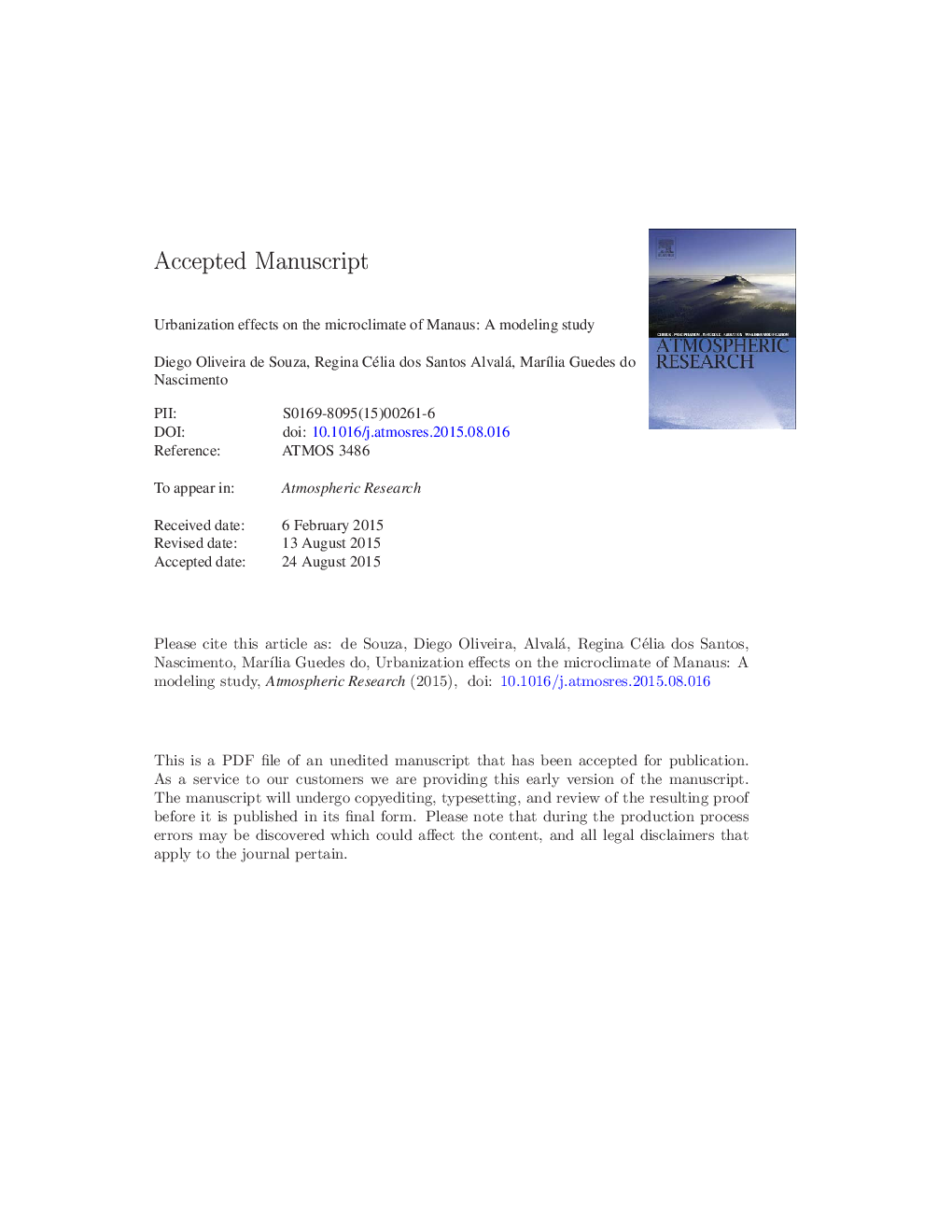| Article ID | Journal | Published Year | Pages | File Type |
|---|---|---|---|---|
| 6343164 | Atmospheric Research | 2016 | 31 Pages |
Abstract
Activities associated with land use and land cover changes and urbanization induce local impacts, such as changes in atmospheric composition in water and energy balances and changes in the ecosystem. Therefore, more studies are needed to evaluate the possible relationship between urban growth and local and regional changes. In the last 30Â years, the population of Manaus grew by over 500%, with approximately 1.9 million inhabitants in 2010. Trying to understand the effects of the urban growth of the city of Manaus on its microclimate and atmospheric processes, the present study aims to evaluate the possible physical mechanisms related to the urbanization process observed through a study of atmospheric modeling. The results allowed to assess that the presence of the urban area significantly modifies the surface energy balance (SEB), generating a thermal gradient between the city and the surrounding regions, favoring the formation and intensification of local atmospheric circulations. The results indicated that with urban growth there is an increase in temperature, decrease in the atmospheric water content and significant changes in the flow at low levels, mainly in the breeze circulations, with significant changes observed in the structure and characteristic of the planetary boundary layer (PBL) over the study area. A positive correlation between the increase of the urban area and increased rainfall was also observed. From the results, it was possible to observe that there is a direct relationship between urban growth and changes in the local microclimate in Manaus.
Related Topics
Physical Sciences and Engineering
Earth and Planetary Sciences
Atmospheric Science
Authors
Diego Oliveira de Souza, Regina Célia dos Santos Alvalá, MarÃlia Guedes do Nascimento,
